10 places to see beyond Venice
When you come to Agriturismo Ca’ Marcello, most of the time you want to visit Venice.
However, those who stay for several days want to see something beyond Venice.
Veneto has a lot to offer, and many places can be reached in a short time by car from Ca’ Marcello. Here we have collected some of them, perhaps a few more than ten, but they are all places that are worth the visit.
Riviera del Brenta
We start from Riviera del Brenta 🙂
The entire area of the Brenta Riviera was, starting from the 16th century, initially characterized by the purchase of land to cultivate by Venetian nobles who wanted to invest in agriculture.
From the 18th century the Brenta Riviera increasingly became a place of delight and holiday resort with its villas, parks and well-kept gardens.
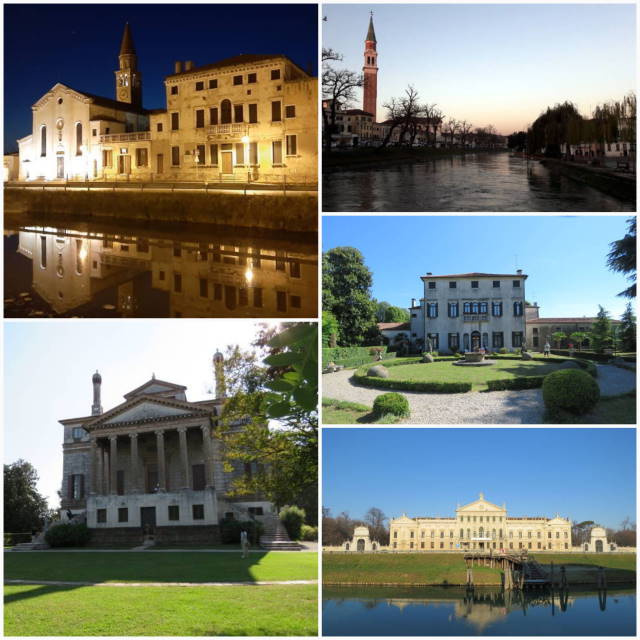
With Burchiello a daily passenger transport service was guaranteed which connected Venice to Padua.
This is why the Brenta Riviera, with its numerous villas, is considered an extension of the Grand Canal.
There are few villas that can be visited and to be sure of the openings (some are only open on Sundays from April to October) we recommend contacting the information office located at Villa Rezzonico Foscari in Mira.
There are several ways to discover the Brenta Riviera: by car, by bicycle, or with one of the cruises along the Brenta Riviera.
The ideal starting point is Fusina admiring Venice and then gradually going up the canal towards Malcontenta and its Palladian Villa Foscari. Continuing to Oriago, Dolo, and reaching Stra.
Chioggia
Starting from the Ca’ Marcello farmhouse, in half an hour by car you reach Chioggia, the southern part of the Venitian lagoon.
Corso del Popolo is the street of production activities and services. At the end of the street there is Piazzetta Vigo, characterized by a 12th century marble column holding a lion of St. Mark.
Chioggia is the main fishing center of the lagoon and its fish market (every morning except Monday) is certainly worth a visit to the city.
A curiosity that not everyone knows is that in Chioggia there is the oldest clock in the world. It is located on the bell tower of the Church of Sant’Andrea.
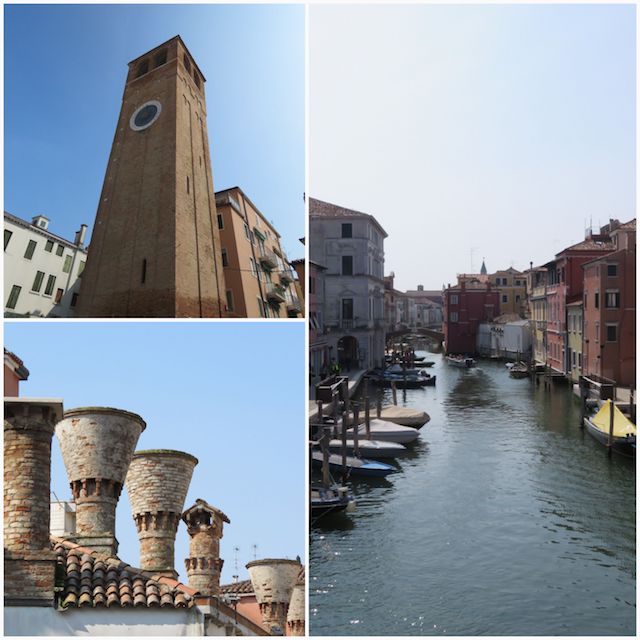
Padova
Part of the important commercial axis Padua – Riviera del Brenta – Venice, the city of Padua has a history that leads to the Roman Empire and beyond as Paleo-Venetian traces dating back to the 10th-11th centuries BC have been found.
An ancient legend has it that the city of Padua was founded by Antenor, fleeing from Troy which was set on fire.
For Padua you need to plan at least a day visit, especially if you want to visit the most well-known places such as the Scrovegni Chapel frescoed by Giotto, or the baptistery of the Cathedral (finished being restored in 2020), the Palazzo della Ragione, the Basilica of Sant’Antonio di Padova, or the botanical garden. Not to mention the exhibitions that often take place at the Zabarella palace. Don’t forget that Padua is an ancient university city, with an illustrious academic history. And from July 2021 it is part of Unesco Heritage with its XIV centiries frescoes that you find in many places of the city.
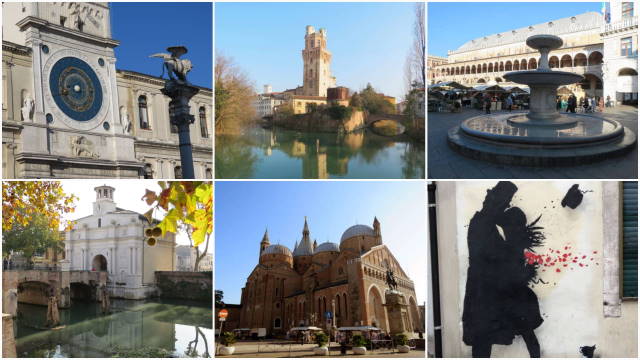
Colli Euganei
The Euganean Hills are close to Padua and rise suddenly from the surrounding plain.
“These hills rise unexpectedly from a perfectly flat plain up to their foot. […] From their peaks you dominate panoramas so open, so vast that you forget you are at very modest altitudes.”
[from a plaque placed to the Olivetans on Monte Venda- Aldo Pettenella, Colli Euganei. The long memory of the landscape – 1995]
The Euganean Hills and the surrounding areas offer the opportunity to visit many small towns; some seem suspended in time.
First of all Arquà Petrarca, one of the most beautiful villages in Italy. Not far away is Villa Valsanzibio, whose beautiful garden with fountains, labyrinths and water features can be visited.
But there is also the Catajo Castle with its beautiful garden and frescoed internal rooms.
And then to the south of the hills, very close, there are the walled cities of Montagnana (among the best preserved walls in the world), Este, with its archaeological museum which testifies to the life of Este from prehistoric times to the Roman age, and finally Monselice.
Not to forget the importance of the spas between Abano and Montegrotto, frequented and well known already in the times of the ancient Romans, and based on the latest findings also between the third and second millennium BC.
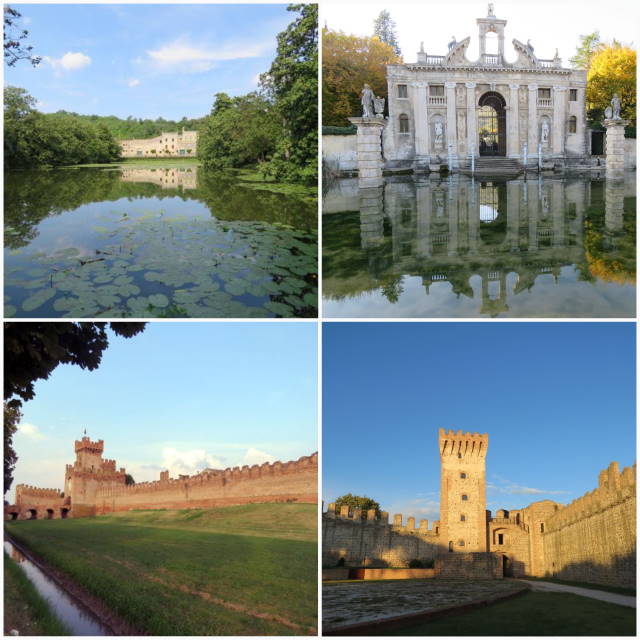
For nature lovers walks, the Euganean Hills are an excellent choice, for the variety of vegetation found there and for the views that open up. The Euganean Hills Park has a good network of well-marked paths.
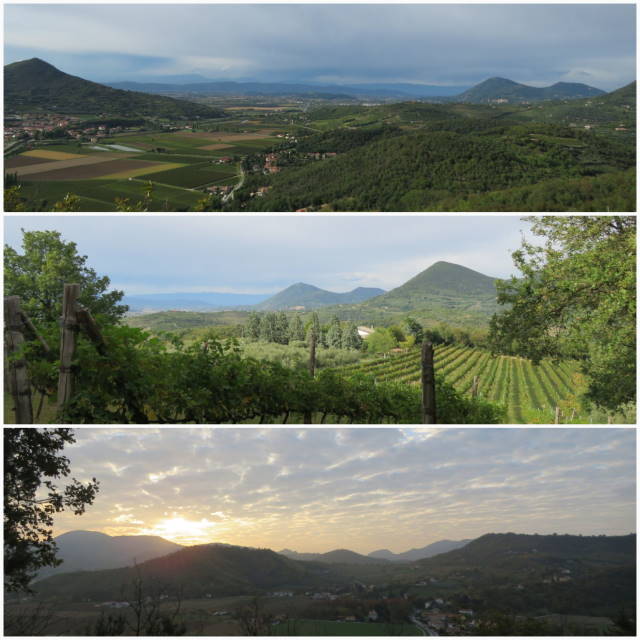
Treviso
The city of Treviso is characterized by the waters of the Sile’s tributaries and by the Sile itself, the longest resurgence river in Europe, which bathes the city to the south.
Treviso has developed its main activities thanks to the presence of water, with numerous mills used for different activities.
It is pleasant to walk through the streets, porticoes, squares of Treviso, and discover its hidden treasures, and looking among the houses for the wheels of the mills that still exist even if they are no longer functional.
The most characteristic view is the Buranelli Canal, with porticoed houses reflected in the water: a romantic corner of ancient Treviso.
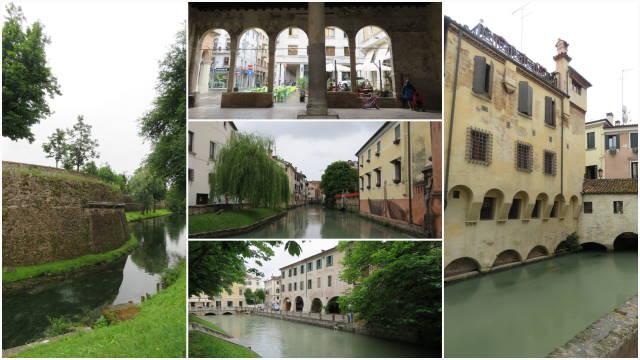
Beyond Treviso there are many small towns to visit in the surrounding area. For example, the Prosecco road which does not just mean vineyards, but passes through many towns in the Treviso area.
Vicenza
Vicenza is the Palladian city, known for its architecture.
Its heart is Piazza dei Signori, with the unmistakable mass of the Palazzo della Ragione.
The streets of the city speak of Palladio: there are numerous buildings built by him.
Palladio’s last work was the beautiful Teatro Olimpico.
A visit to the city cannot ignore the climb to the Basilica of Monte Berico, which is located on a hill where you can enjoy a beautiful panoramic view of the city of Vicenza.
Not far away is Villa Valmarana with wonderful paintings by Tiepolo.
Last but not least is the Rotonda, i.e. Villa Almerico Capra, one of Palladio’s masterpieces.
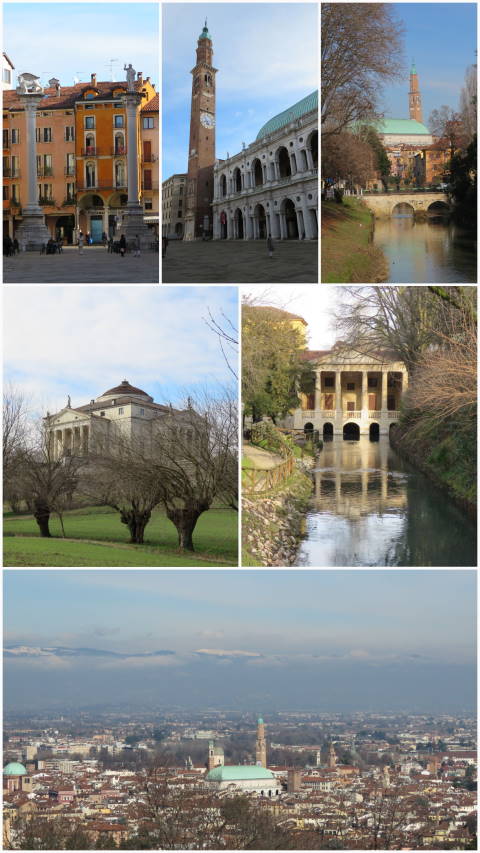
Cittadella e Castelfranco Veneto
Cittadella is a charming town that still preserves the helical-shaped walls from the 13th century, with the patrol walkway still passable. You pass through the access gates to the city, the towers, turrets, with a privileged point of view over the entire city and the surrounding area.
The Cittadella walkway is accessed from Porta Bassano and you also have the opportunity to visit the Civic Archaeological museum which is located inside Torre Malta, which also has a beautiful viewpoint above.
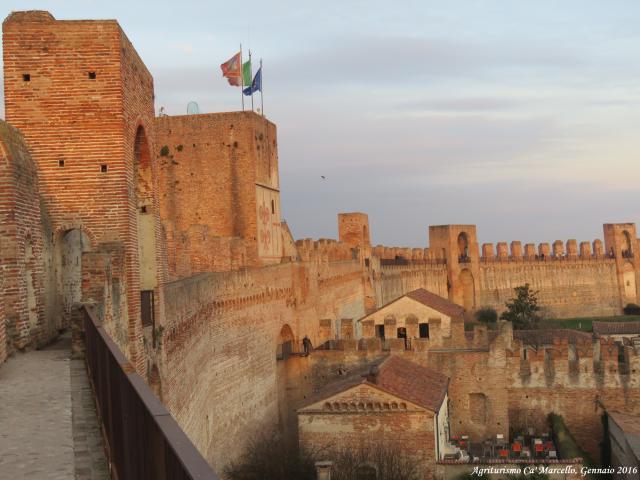
I
In the same area of Cittadella is Castelfranco Veneto, another fortified city. In this case the walls form a quadrilateral that surrounds the original settlement which was entered through the four access gates. The best preserved is the one towards Treviso with the clock and the Lion of San Marco.
Giorgione was born in Castelfranco Veneto and in fact here it is possible to visit the painter’s birthplace.
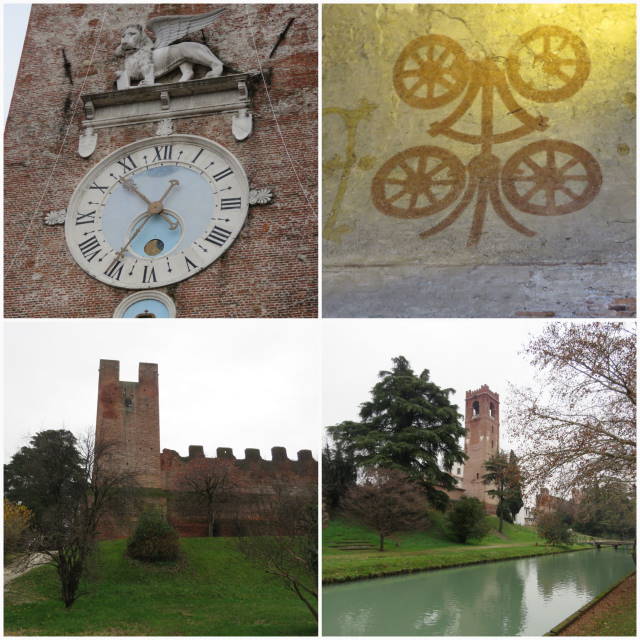
Marostica, Bassano, Asolo
Marostica è una città medievale fortificata.
Spiccano il Castello Superiore e il Castello Inferiore. Il Castello Inferiore con il suo imponente mastio è visitabile e si può salire fino in cima da dove si ha una bella vista sulla Piazza degli scacchi, famosa per la partita a scacchi con personaggi viventi, che si svolge ogni due anni la seconda settimana di settembre.
Con una passeggiata si raggiunge anche il Castello Superiore per ammirare il panorama che si apre sulla pianura circostante e su Marostica.
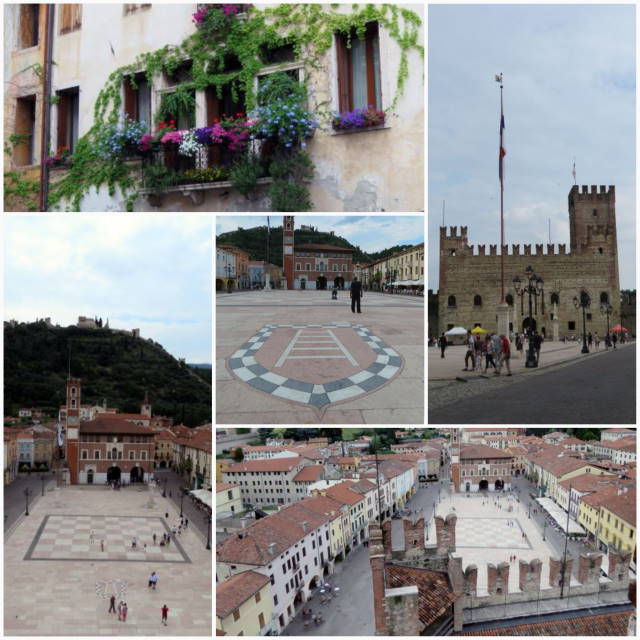
Molto vicina a Marostica c’è Bassano del Grappa.
Bassano del Grappa è famosa per due ragioni: il Ponte degli Alpini e la grappa 😉
Il Ponte sul Brenta è il simbolo della città. È un ponte coperto costruito in legno per resistere alle frequenti piene del Brenta. Dalle sue spallette si possono ammirare entrambe le rive del Brenta e dalla parte del centro storico di Bassano si nota svettare il Castello superiore, nucleo originario della città.
Dal ponte si raggiungono subito le distillerie Polo, dove si può vedere come viene prodotta la grappa in un piccolo museo.
Vale la pena una visita al centro cittadino toccando piazza della Libertà, Piazza Garibaldi, il Castello Superiore e Palazzo Sturm.
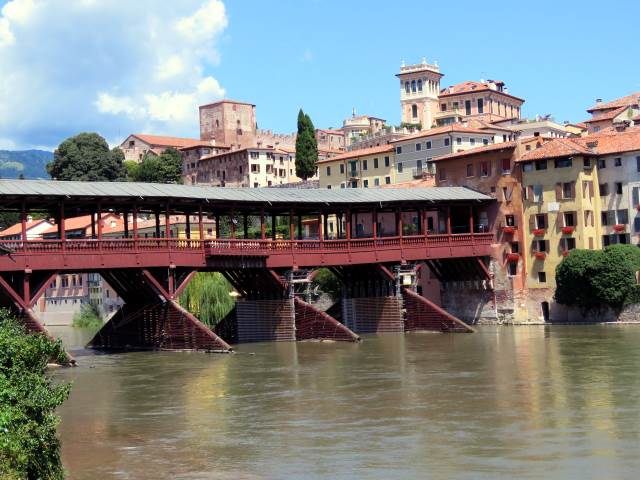
Dopo Bassano si può raggiungere Asolo.
Asolo è stata definita da Giosuè Carducci la città dei cento orizzonti per gli innumerevoli panorami che si aprono attraverso i varchi delle vie medievali.
Grazie alla sua posizione, Asolo è stata abitata fin dai dall’epoca preistorica.
La cittadina è circondata da mura, ed è disposta sul dorso di un colle. Il suo centro è Piazza Garibaldi, contornata da bei palazzi signorili. Le principali strade di Asolo sono fiancheggiate da portici che ospitano molte botteghe dove fare acquisti di prodotti tipici e non solo.
Dalla piazza si può salire al Castello della Regina Cornaro, di origine medievale, oppure si può raggiungere la Rocca da dove è possibile ammirare il paesaggio circostante e arrivare con lo sguardo alle Dolomiti oppure a Venezia.
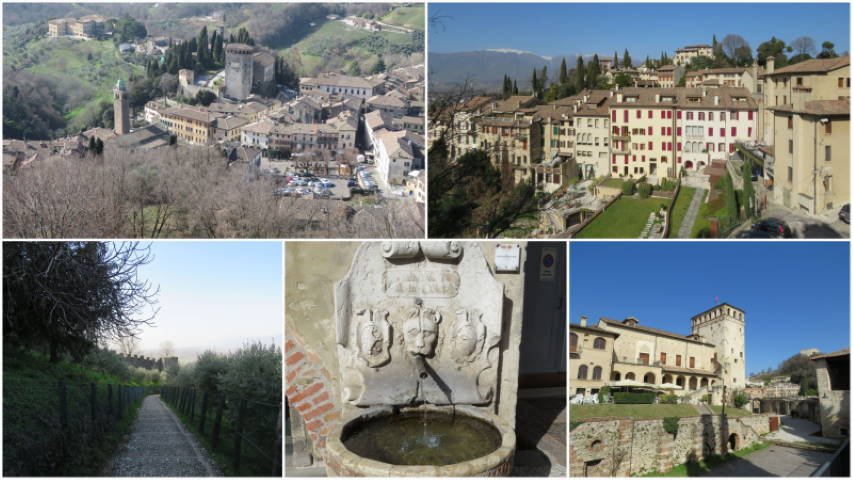
Le cittadine di Castelfranco Veneto, Cittadella, Marostica, Bassano del Grappa e Asolo possono costituire una gita da fare in giornata, in quanto sono tutte piccole, e abbastanza vicine tra loro, accomunate dall’essere tutte città fortificate, con mura più o meno ben conservate, e spesso accomunate dalle stesse vicissitudini storiche.
Approfondimenti e suggerimenti di visita
Riviera del Brenta
Padova
Treviso
Arquà Petrarca e Villa Valsanzibio
Castello del Catajo e San Pelagio
Montagnana
Cittadella
Bassano del Grappa
Consiglio di soggiorno
Per la vostra vacanza presso l’agriturismo Ca’ Marcello di più notti (da 3 notti in su), consigliamo gli appartamenti. Ci sono gli appartamenti bilocali per 2-3 persone, oppure gli appartamenti trilocali per 4-5 persone.
Per informazioni su prezzi e disponibilità contattare info@camarcello.com
